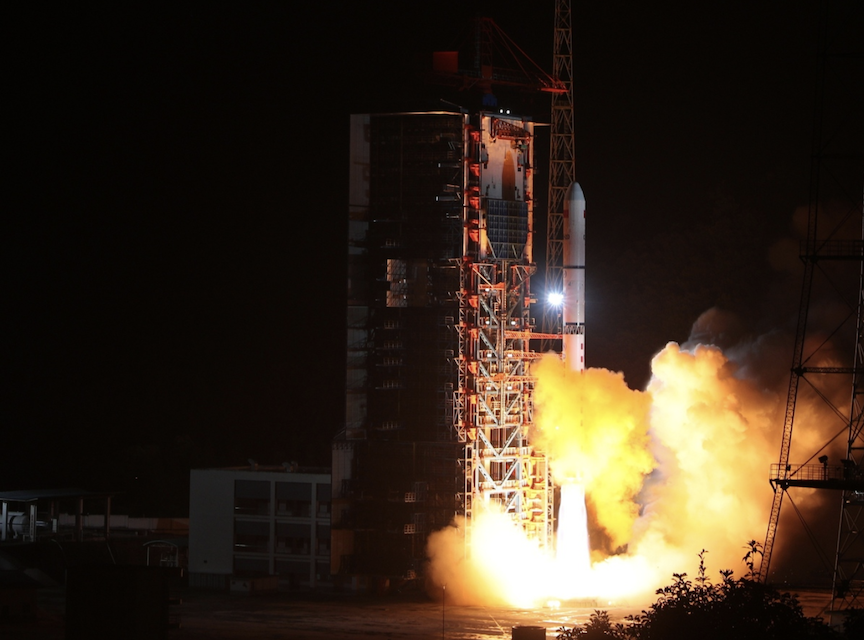
The satellites are launched as the third group of the Yaogan-35 family from the Xichang Satellite Launch Center in Southwest China’s Sichuan province on Friday. [Photo/Xinhua]
Remote-sensing refers to the process of detecting and monitoring the physical characteristics of an area by measuring its reflected and emitted radiation at a distance, typically from aircrafts or satellites.
China used a Long March 2D carrier rocket to launch several remote-sensing satellites on Friday night, according to China Aerospace Science and Technology Corp, the country’s leading space contractor.
The rocket blasted off at 9:28 pm at the Xichang Satellite Launch Center in Sichuan province and soon placed the Yaogan 35-02 satellites, the third group of spacecrafts in the Yaogan 35 remote-sensing network, into their preset orbits, the State-owned company said in a news release.
Remote-sensing refers to the process of detecting and monitoring the physical characteristics of an area by measuring its reflected and emitted radiation at a distance, typically from aircrafts or satellites.
The release said that the satellites are tasked with carrying out scientific experiments, surveying land resources, forecasting agricultural yields and helping in disaster prevention and relief.
China launched the first and second groups of Yaogan 35 satellites in November 2021 and this past June respectively.
Long March 2D, designed and built by the company’s Shanghai Academy of Spaceflight Technology, is propelled by liquid propellants and has a liftoff thrust of 300 metric tons. It is capable of sending spacecrafts with a combined weight of 1.2 ton to a sun-synchronous orbit with an altitude of 700 kilometers.
The launch was the 429th flight of the Long March rocket fleet, the nation’s largest launch vehicle family.
By now, China has carried out 24 space launch missions this year. The country plans to conduct more than 60 launches in 2022.
By ZHAO LEI | chinadaily.com.cn
